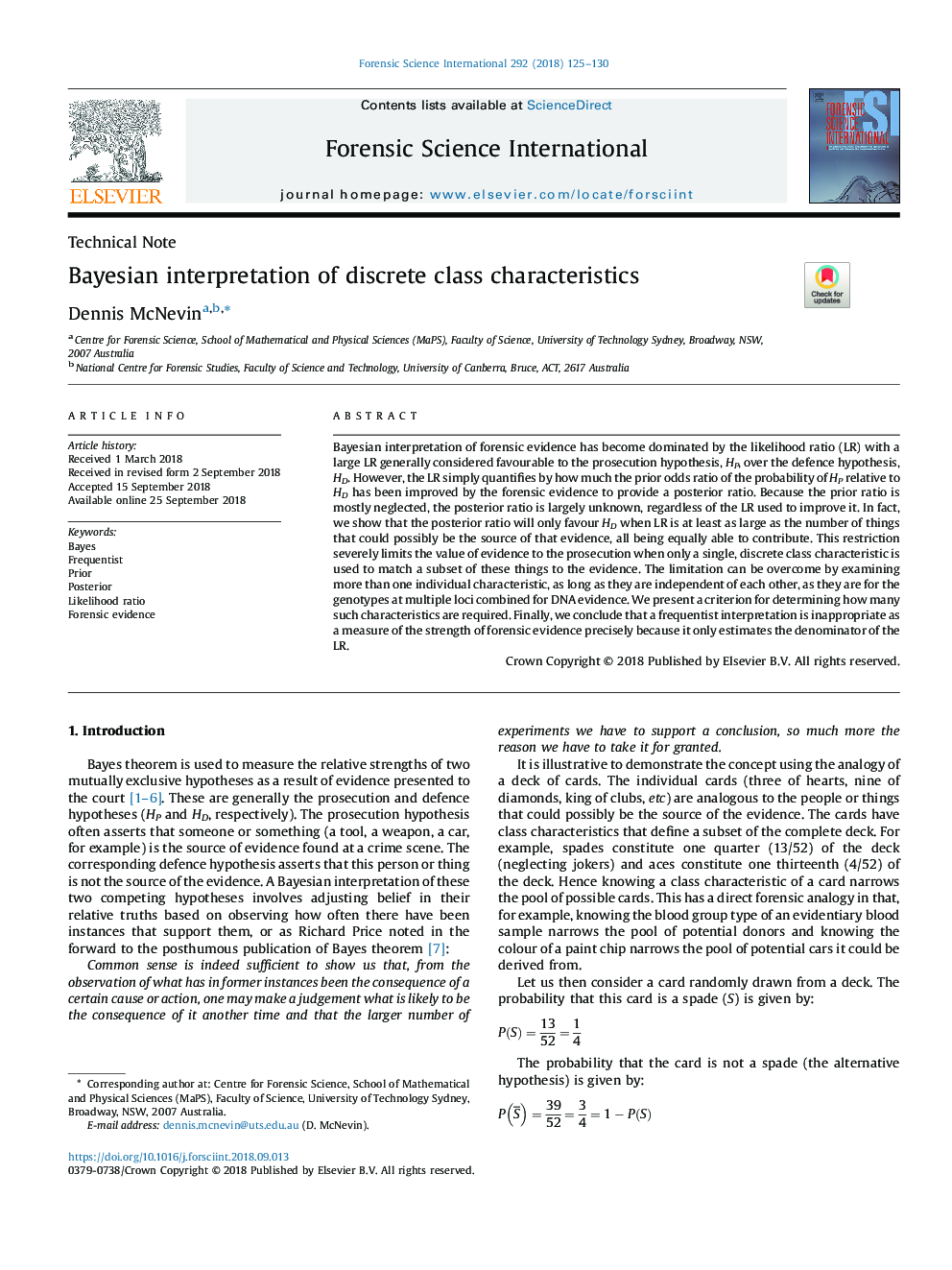| Article ID | Journal | Published Year | Pages | File Type |
|---|---|---|---|---|
| 11024541 | Forensic Science International | 2018 | 6 Pages |
Abstract
Bayesian interpretation of forensic evidence has become dominated by the likelihood ratio (LR) with a large LR generally considered favourable to the prosecution hypothesis, HP, over the defence hypothesis, HD. However, the LR simply quantifies by how much the prior odds ratio of the probability of HP relative to HD has been improved by the forensic evidence to provide a posterior ratio. Because the prior ratio is mostly neglected, the posterior ratio is largely unknown, regardless of the LR used to improve it. In fact, we show that the posterior ratio will only favour HD when LR is at least as large as the number of things that could possibly be the source of that evidence, all being equally able to contribute. This restriction severely limits the value of evidence to the prosecution when only a single, discrete class characteristic is used to match a subset of these things to the evidence. The limitation can be overcome by examining more than one individual characteristic, as long as they are independent of each other, as they are for the genotypes at multiple loci combined for DNA evidence. We present a criterion for determining how many such characteristics are required. Finally, we conclude that a frequentist interpretation is inappropriate as a measure of the strength of forensic evidence precisely because it only estimates the denominator of the LR.
Related Topics
Physical Sciences and Engineering
Chemistry
Analytical Chemistry
Authors
Dennis McNevin,
